
ChrisM
-
Posts
11 -
Joined
-
Last visited
Content Type
Profiles
Forums
Articles
Gallery
Downloads
Events
Posts posted by ChrisM
-
-
-
-
8 hours ago, Frosty said:
I dragged my pan forge out of the weeds and will be setting it up at the Mark Aspery workshop this weekend. I'll see if I can get some pics as I clay it and how it looks with the bricks in place. All I need to do is remember.
Frosty The Lucky.
That would be great. Thanks
-
5 hours ago, Frosty said:
It's not MY design Chris, it's just old school clayed pan forge. My big "shop" forge has a piece of 1/4" plate with 3/8" holes drilled in it for an air grate. I ended up closing most of the holes with rivets dropped in them. I've used a forge with the bar grate and like it a LOT better.
My old pan forge has the original Buffalo(?) domed air grate and I just rake the clinker out as part of fire management. I've used an old "real" cast fire pot forge too and it was okay but I don't need a fire that big 99% of the time and coal costs $ so why burn more than I need?
Of course that's just my opinion and I'm a gas forge guy. I could be wrong.
Frosty The Lucky.
I liked what you were saying about using the fire bricks to form the fire pot. I also like the idea of using a bullet grate.
-
Awsome, thanks for the Pics. As they say a picture is worth a thousand words.
Frosty
I am really leaning toward your design. I like the flexibility and as I really don't know what I am doing yet it will give am a change to mess around with differant configurations until I learn what works best for me.
Chance not change
-
4 hours ago, Frosty said:
Welcome aboard Chris, glad to have you.
My big hardly ever used coal forge is a flat steel table 14 ga. I believe 3' x 4' with a 2" x 2" angle iron rim flange up. I won't go farther into it's construction other than to say you don't need plate for the bed, even under the fire. My tuyere is exhaust tubing, the vertical section is 4" big truck pipe with 2" horizontal for the air supply. The ash dump is an exhaust flap cap clamped to the bottom upside down. I welded a flange to the top end where it connects to the table. The table has a 3" dia hole drilled in it for the air. (I have lots of hole saws, wonderful tools they are.) My original design was a bunch of holes in the deck for the air grate and that worked for a couple hours before burning through. Next I drilled the 3" hole and repeated the bunch of holes air grate by drilling them in a piece of 10 ga. (Yes I used a hole saw.
 ) It lasted longer but was still problematical cleaning clinker and eventually burning out.
) It lasted longer but was still problematical cleaning clinker and eventually burning out.
I replaced it with 1/2" dia. bar tacked with gaps and it works a treat.
The rest of my forge table is covered with fire brick and has a gap 2 bricks wide by 1 brick long over the air grate. I stack fire brick around it to define the fire size and shape I want. It's a sort of Duck's Nest forge with NO FIRE POT. I don't need one don't want one. I may not burn coal very often but when I do this forge is a treat to use. It's much easier and more efficient than my hand crank blown rivet forge.
Frosty The Lucky.
The base construction of your table is very simlilar to mine as you can see in the picture except that I cut a big round hole in mine. Your idea sounds very interesting. I like the idea of being able to adjust the size of the fire.
4 hours ago, Charles R. Stevens said:A plate on a union dosnt work so well, it's the crown of the Cap that sheds the slag.
Personaly, I would just weld a wall on the open side and dump a bag of play sand in it. No need to weld the plate back in, keep the disk and sorce a 2" cap. Note we usualy work from the side, and need to pass stock all the way grew the fire and off the far side of the tabble...
I understand what you are saying about the cap. I can get one close to work. I have also noticed as you point out, many of the forge tables I have seen pics of are set up to work from the side.
How important is it to work a klinker breaker into the design?
-
I don't have a 2" cap handy but I do have a 2" union that I can weld a plate on to make a cap.
Thanks for the advice.
-
I still have the steel that was cut out to accommodate the disk. I could weld that back in and re cut a hole to fit a normal pot. Would that be a better way to go? And then use the firebrick as you suggest?
-
Would it be better to use fire bricks or weld a rim on the back side of the disk? I have plenty of steel. I could do a 3 or 4 inch rim on the back side.
-
Hello
I am new to this forum and new to Blacksmithing so any advice is much appreciated. I have been working with a 2 burner gas forge for a while and decided it was time to build my own coal forge. I was planning on using a disk harrow blade as my fire box but after doing some more reading I am beginning to think it may be too shallow. I am including some pictures of the forge being built and would welcome any input.
Thanks in advance.
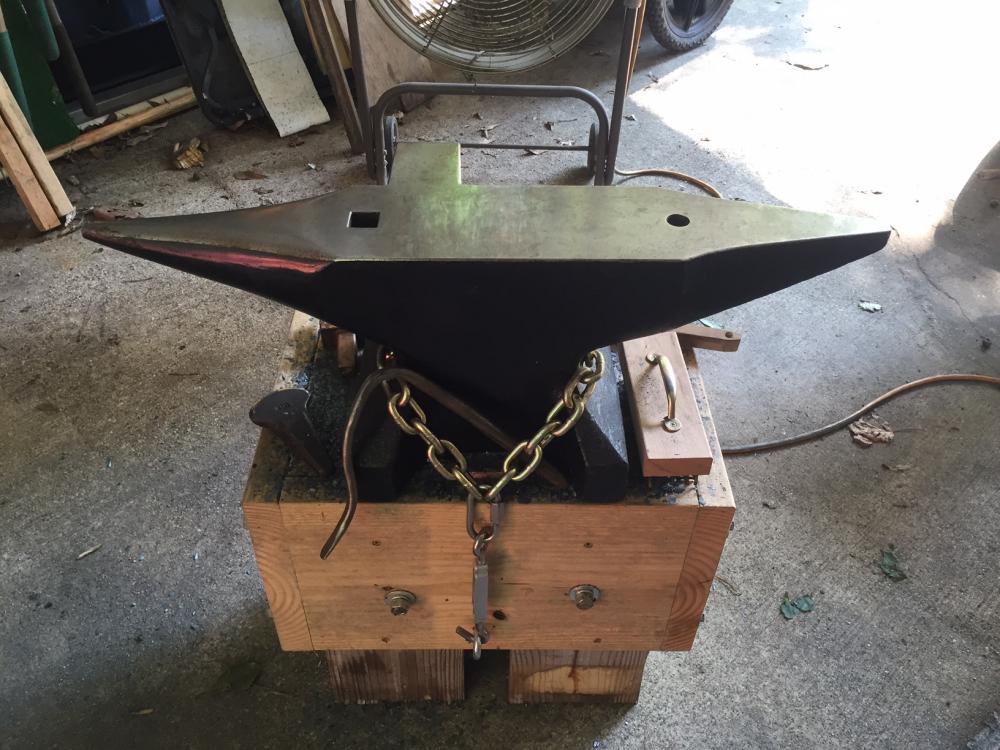
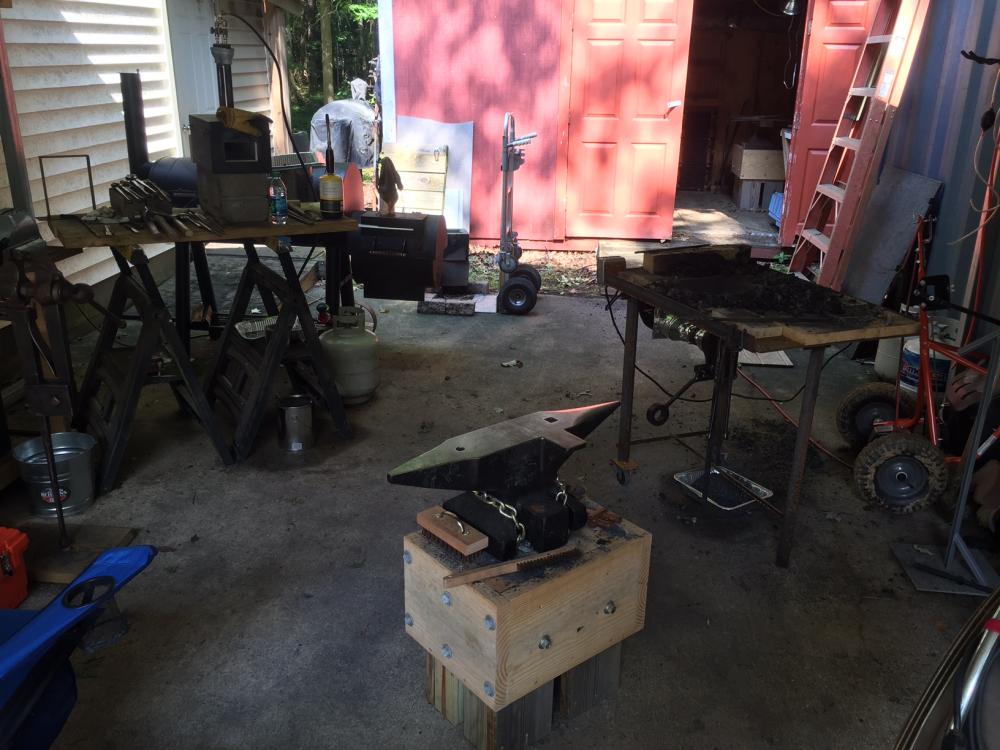
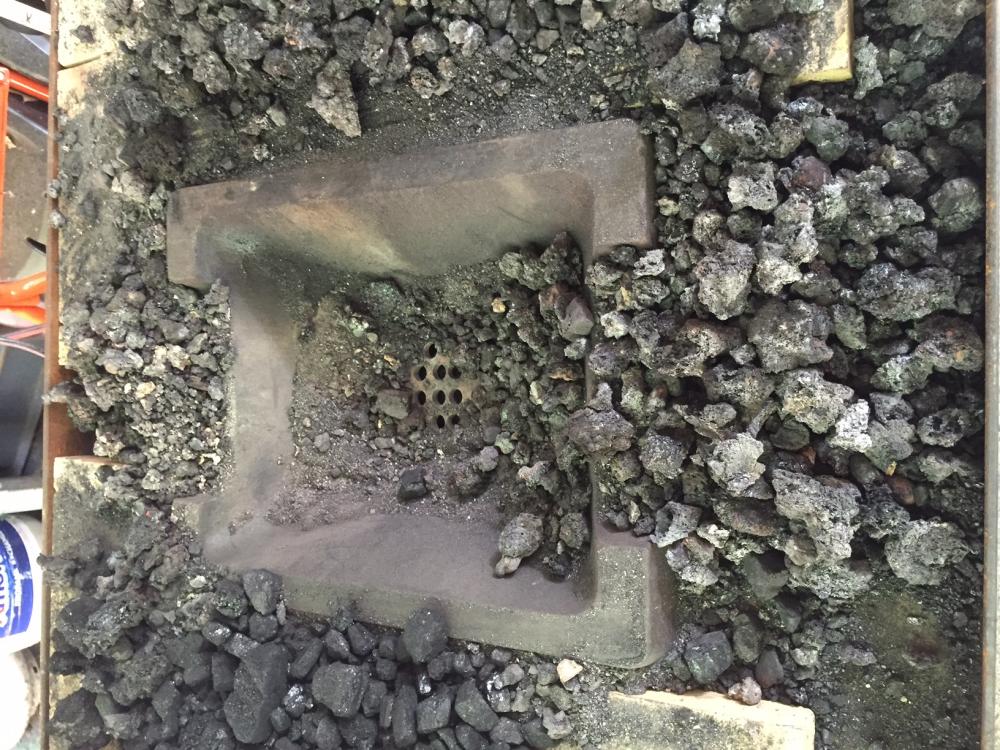
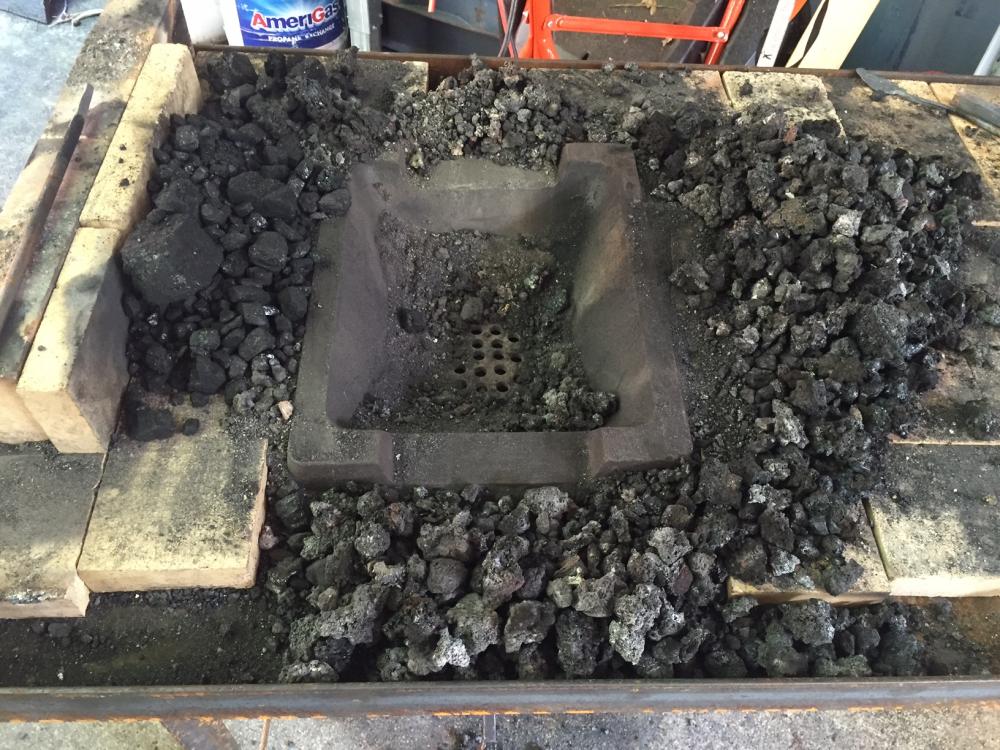
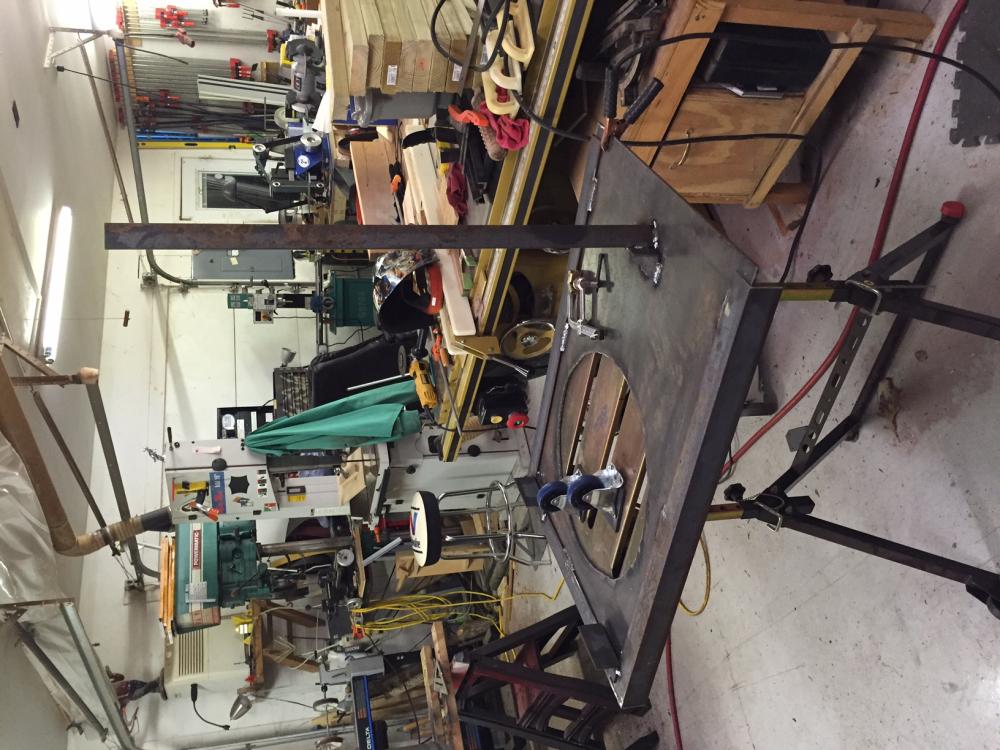
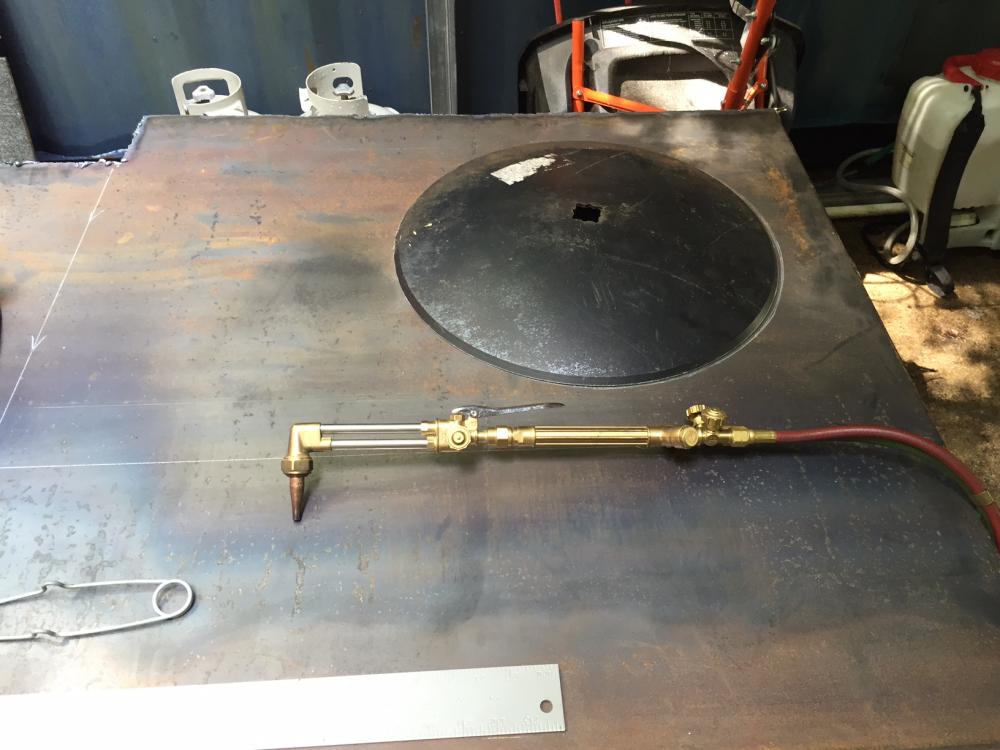
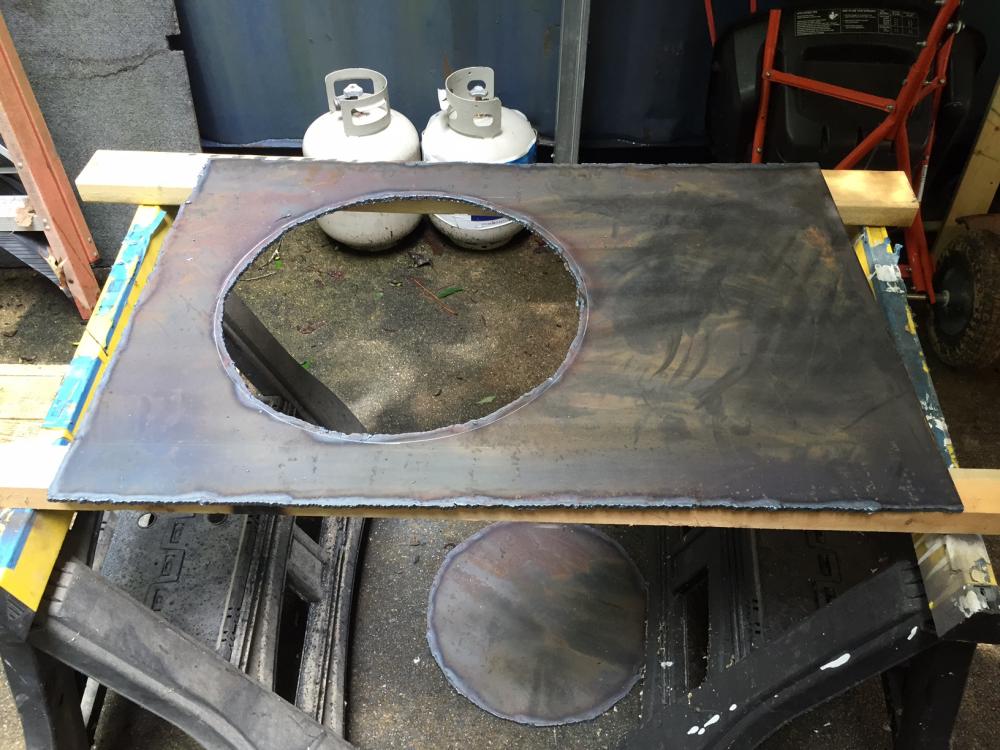
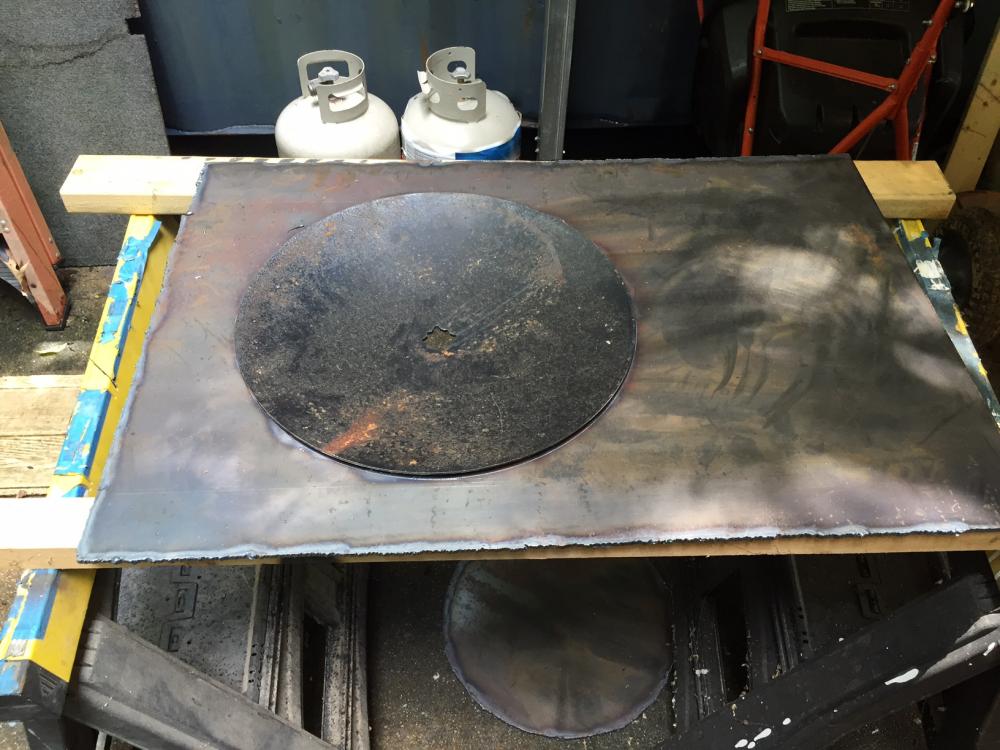
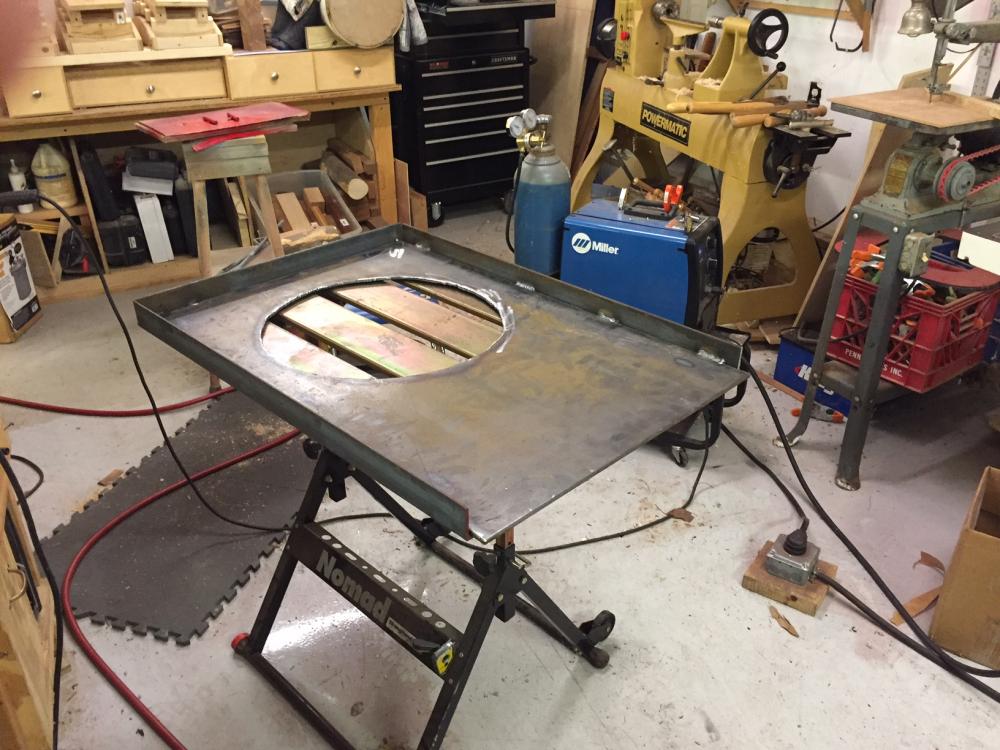
Laurel Machine and Foundry fire pots???
in Solid Fuel Forges
Posted
Yes it is. Just got it a couple of weeks ago. It is really heavy duty. The grate is just a piece of 1/4" plate I drilled a bunch of hole in.